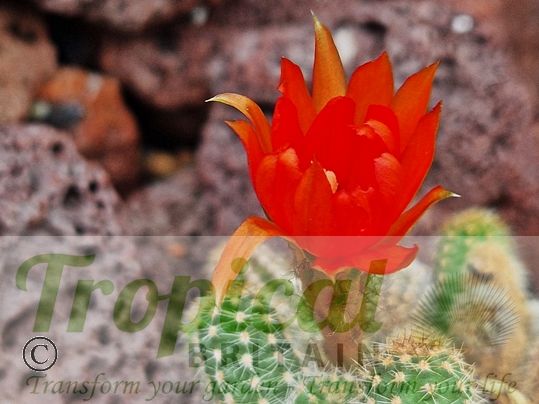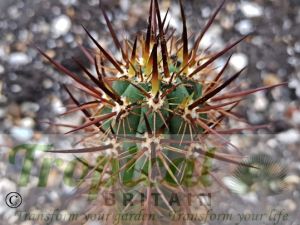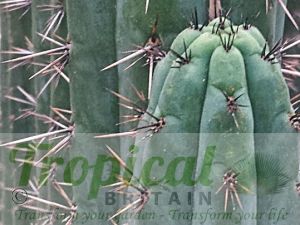Chamaecereus silvestrii, Peanut Cactus, was known to most of us by this name until 1983 when it had a perplexing taxonomic name-change and became Echinopsis chamaecereus. Many people ignored this and thankfully Plants of the World Online now recognises it again as Chamaecereus silvestrii. Hopefully it may live out its days without too much more taxonomic malarkey.
First collected in 1896 by Carlo Luigi Spegazzini in the mountains of NW Argentina and described by him as Cereus silvestrii, subsequent expeditions failed to find it and it is now thought to be extinct in the wild. It is however, widespread in cultivation and in the Mediterranean it is commonly seen outside as a windowsill plant.
Chamaecereus silvestrii is a low mat-forming cactus with many elongated segments and soft bristle-like spines. In spring it produces numerous orange to red flowers. It is ideal in a large terracotta bowl where it will relatively quickly form a large plant, often turning reddish-pink in full-sun. Segments dislodge easily and readily root to form new plants. It is hardy to about -7C and if you have a warm area protected from the rain it is worth experimenting with outside in the more favoured southern and southwest coastal locations of the UK or within the London heat island. Ensure you have back-up plants first, just in case!
Additional Information
| Order | Caryophyllales |
|---|---|
| Family | Cactaceae |
| Sub-Family | Cactoideae |
| Synonyms | Cereus silvestrii, Cereus silvestrii var. crassicaulis, Echinopsis chamaecereus, Lobivia silvestrii, |
| Geographical Origin | Argentina : Tucumán, Salta - but thought to be extinct in the wild |
| Cultivation | Water and feed during the growing season. Keep dry during winter. Well-drained substrate |
| Eventual Height | 15cm |
| Eventual Spread | 30-40cm |
| Hardiness | Hardy to about -7C if kept dry. If you have back-up plants and a warm, protected dry microclimate it is worth experimenting with outdoors |

Free DELIVERY
ON ALL ORDERS OVER £99THIS OFFER IS VALID ON ALL OUR STORE ITEMS.












